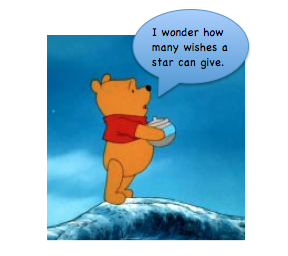A Voice from the Village
By Karen Loo, K-2 Resource Teacher
982-0441
“I wonder why the sky is blue.”
“I wonder how rain is made.”
“Mommy, do snails snore?” (My daughterʻs wondering many years ago.)
“Grandma, do bunnies blink?” (My granddaughterʻs wondering as she stared at and fell in love with her new bunny recently.)
As you can see from the examples above, in its simplest form, a wondering is a question. However, the wonder of wondering, is that it is the start and at the heart of learning. Research and the greatest minds (Albert Einstein, for one) tell us that curious people tend to be more engaged, do better academically, persist with problem-solving, and learn to see challenges from different angles. The reason is very simple: they want to know. These are the “inquiring minds.” You might also know them by these other labels: explorer, inquisitive, creative, risk-taker, seeker, discoverer, innovative, ingenious, and imaginative. The power of curiosity is that it holds the keys to both academic and lifelong learning. As the gateway to more complex thinking, because it drives the desire to know, wondering/curiosity is a trait we want to encourage and celebrate.
So, what goes into the care and raising of inquisitive people? Interestingly, the first is this: people who care. People who care about the questions a child asks show a value of both the person and curiosity as a trait. Often they ask questions themselves, help find sources, or just delight in the questions asked by the child. That means that caring adults in your childʻs life might:
- Ask “What good question did you ask today?” (just as Albert Einsteinʻs mother did!)
- Go outside and explore. Turn over rocks, follow a bug, look at the stars. Wonder outloud about what is seen and not seen, and encourage your child to join in the wondering.
- Use the story/information text as a jumping point to wonder about other things, while reading to your child.
- Share a question that led to different sources – even if an answer hasnʻt been found yet. In this article from the site About Kidsʻ Health the authors offer this choice: “Do you want her to know you have all the answers? Or do you want her to see you know how to find an answer when you don’t know it? The latter teaches a child to enjoy the process of learning and discovery.”
Just as important as knowing what to do, is knowing what NOT to do when nurturing curiosity in others. Dr. Bruce Perry, and others tell us that fear, disapproval, and the absence of a caring adult will diminish the joy of being curious.
Why is it that Winnie the Pooh felt comfortable asking, “I wonder how many wishes a star can give?” Iʻd like to believe that itʻs because taking time to wonder in the Hundred Acre Woods, was a big part of enjoying life in the Hundred Acre Woods. Letʻs make wondering a big part of our keikiʻs joy of learning.
For more about the importance of wonder and curiosity, visit these sites:
https://www.pakeys.org/uploadedcontent/docs/ecmh/Focus%20on%20ECMH-Curiousity.pdf

